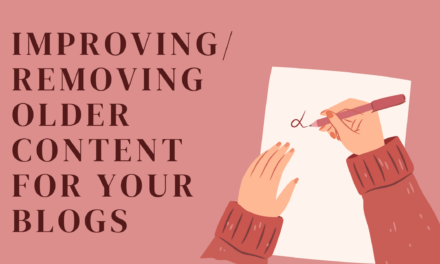In today’s digital landscape, where user experience is paramount, understanding and optimizing your website’s performance is no longer just an option – it’s a necessity. Your website’s performance directly impacts user satisfaction, engagement, and even search engine rankings. In this comprehensive guide, we delve into the intricacies of INP Core Web Vitals optimization, shedding light on how you can not only comprehend but also enhance your website’s performance to ensure it stands out amidst the digital clutter.
1. Introduction
In the ever-evolving digital realm, where attention spans are dwindling, and competition is fierce, having a website that not only captures but retains user attention is paramount. Website performance goes beyond aesthetics; it’s about creating an immersive and seamless experience that keeps visitors coming back for more.
2. The Significance of Core Web Vitals
Core Web Vitals are a set of user-centric metrics that Google considers crucial in evaluating the overall experience your website offers. These metrics provide valuable insights into various aspects of web performance that directly influence user satisfaction. As Google continues to refine its algorithms, these metrics have become a significant ranking factor, making their optimization imperative.
3. Understanding INP Core Web Vitals
– Largest Contentful Paint (LCP)
LCP measures the loading performance of your website’s main content. It gauges the time it takes for the largest and most meaningful content element to become visible to users. To enhance LCP, optimizing server and client rendering, as well as resource delivery, is essential.
– First Input Delay (FID)
FID assesses interactivity and responsiveness. It quantifies the time between a user’s first interaction (clicking a link, tapping a button) and the browser’s ability to respond. To minimize FID, optimizing JavaScript execution and reducing main-thread work are pivotal.
– Cumulative Layout Shift (CLS)
CLS evaluates visual stability. It quantifies the unexpected layout shifts that may occur during page load, which can be highly disruptive for users. Achieving a low CLS involves ensuring that elements maintain their position and dimensions throughout the loading process.
4. Impact on User Experience
User experience is the cornerstone of digital success. Poor Core Web Vitals can lead to higher bounce rates, lower user engagement, and a diminished reputation. By prioritizing these metrics, you’re not only enhancing technical aspects but also delivering a seamless and enjoyable experience to your audience.
5. Steps to Optimize INP Core Web Vitals
– Minimize Server Response Times
A swift server response time is fundamental for a snappy user experience. Optimizing databases, using efficient coding practices, and leveraging caching mechanisms can significantly reduce response times.
– Browser and Server Communication
Efficient communication between the browser and server is vital. Technologies like HTTP/2 and HTTP/3 facilitate faster data transmission, contributing to reduced loading times.
– Efficient Resource Loading
Optimizing resource loading involves compressing images, utilizing lazy loading, and minimizing the usage of third-party scripts. This ensures quicker page rendering and an overall enhanced user experience.
– Prioritize Visual Stability
To prevent layout shifts, ensure that images and other media have predefined dimensions. Implementing CSS grid systems and avoiding intrusive pop-ups can further contribute to visual stability.
6. Technical Tools for Measurement and Enhancement
– Leveraging PageSpeed Insights
PageSpeed Insights, a powerful tool by Google, provides a comprehensive analysis of your website’s performance. It offers actionable suggestions to improve Core Web Vitals, enabling you to make informed optimization decisions.
– Chrome DevTools for In-Depth Analysis
Chrome DevTools allows you to delve deep into your website’s performance metrics. It enables real-time monitoring, diagnosing bottlenecks, and experimenting with improvements.
– Content Delivery Networks (CDNs) Unleashed
CDNs distribute your website’s content across multiple servers globally, ensuring faster content delivery. This not only enhances user experience but also positively impacts Core Web Vitals.
7. Mobile Responsiveness and Core Web Vitals
In an era where mobile usage is soaring, ensuring your website’s mobile responsiveness is synonymous with optimizing Core Web Vitals. Mobile users demand seamless experiences, and Google recognizes this by factoring mobile performance into search rankings.
8. Future-Proofing Your Website’s Performance
As technology evolves, so do user expectations. By staying updated with the latest web performance practices and embracing emerging technologies, you can future-proof your website’s performance and maintain a competitive edge.
9. The SEO Connection
Optimizing Core Web Vitals is closely intertwined with your overall SEO strategy. Google’s emphasis on user experience aligns with SEO goals, making these metrics pivotal for higher search rankings.
10. Conclusion
In the dynamic realm of the internet, where attention is fleeting and options are plentiful, your website’s performance can make or break your online success. By mastering INP Core Web Vitals, you’re not only enhancing user experience but also positioning your website for greater visibility, engagement, and success.
If you’re ready to unlock the full potential of your website and drive unparalleled user satisfaction, it’s time to delve into the realm of Core Web Vitals. Remember, every second counts, every interaction matters, and by optimizing these vital metrics, you’re not just ranking higher on Google – you’re crafting a digital experience that truly resonates.





